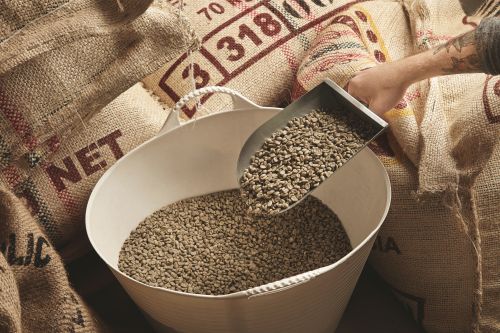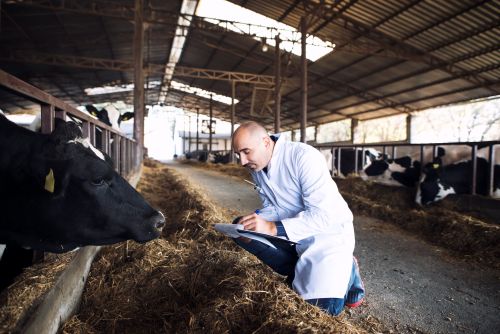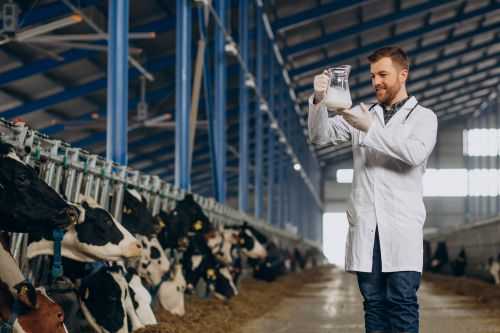
The beginning of the year was certainly marked by the protests of Romanian farmers, who joined similar protests by farmers from several European countries. Certainly, their demands forwarded to the government and the Ministry of Agriculture were largely justified, as Romanian farmers faced major difficulties in carrying out their activities. However, we cannot exclude the possibility that these protests, both national and in other EU countries, were also motivated by the upcoming various elections taking place almost everywhere. In other words, taking advantage of the fact that the authorities are, in this respect, under pressure. However, let's see what our farmers have gained from the protests some of them organized and participated in, and especially what their prospects are.
Over two billion euros
Whether they had someone behind them organizing the protests of Romanian farmers at the beginning of the year, whether they only had troubles on their backs, that no longer matters, since a large part of the demands of those gathered in Afumati, at the border with Ukraine or at the gates of the port in Constanta were real.
To be fair, however, let's say that the protesting farmers were in small numbers, and the main professional associations distanced themselves from the efforts of those on the roads. Just as it should be noted that, as reliable sources have reported, most of those on tractors were not even farm owners, but their employees, sent to be their messengers. Of course, the spokespersons were still farmers.
As far as we remember, what happened at the beginning of 2024, as pipernicit as it was, was still the largest protest of farmers in Romania, an action which, in the end, led to obtaining concrete aid from the government, the most important of which seems to us to be the improvement of conditions for accessing and guaranteeing loans, as well as the support related to bank interest rates. Then, we can account for:
-Support for paying the electricity consumed in irrigation
-Financing from European funds of over 1 billion for agriculture
-Direct grants for producers in the plant sector
-Support for managing the effects of the 2023 drought
-Another 126 million euros as aid for ports affected by the increased traffic of goods from Ukraine
-Legislative measures for agricultural machinery operators
-270 million lei for subsidizing the excise duty on diesel fuel used in agriculture
-Various aid and financing schemes for animal husbandry sectors: pork, dairy cattle, beef cattle, buffalo, poultry, sheep, and goats.
If we total all the support measures granted to farmers, including those already planned or as a result of their pressure on the authorities, surely we can account for over two billion euros, money that will help them overcome the difficult moment they are currently facing. But in the future?
One of the protesters shouted at Afumati: "We are Romanians and we want to remain Romanians!" We are convinced that Romanian farmers will remain so, but no matter how much the European Union accuses it of all sorts of things, here, without the funds coming from there, they would go bankrupt. So, they must acknowledge this reality.
On the other hand, regardless of how much they protest, Romanian farmers need to understand that prices are determined by the market, not by administrative measures. And, as an example, if we talk about cereals, we specify that for the end of this year, the FAO estimates an increase in stocks by over 23 million tons.
This means that, no matter how much the Romanian government or the governments of the world try, the world price of wheat, corn, rapeseed, or triticale will continue to decrease. Anyway, for now, Romanian farmers are not doing badly at all!
What was the international impact?
According to recent projections by the European Council on Foreign Relations, cited by FoodNavigator, the next European Parliament will be more right-wing than ever, with populist anti-European parties likely to lead the polls in nine member states and to come second or third in another nine.
According to the think tank, in June 2024, almost half of the EU parliamentary seats will be held by representatives outside the three main center groups, and a populist right-wing coalition could hold the majority. This could lead to significant changes in EU policy, especially regarding environmental issues.
Signs of a durable shift from centrist left-wing politics to right-wing ones have been felt in recent national elections across Europe, with voters in Slovakia and the Netherlands putting right-wing politicians in power last autumn.
In the US, Democratic Party leader Joe Biden is increasingly likely to run against Donald Trump, who has become the most likely Republican Party candidate to run in the 2024 US presidential elections.
On both sides of the Atlantic, farmer protests have galvanized right-wing politicians. In Italy, Lega party leader Matteo Salvini recently welcomed farmers "whose tractors are forcing Europe to reconsider the madness imposed by multinationals and left-wing politics," while in the US, former President Trump, who is still campaigning in Republican areas against his last challenger, Nikki Haley, boasted of record federal aid to American farmers during his presidency.
The usual suspects: Prices and environmental policies
To try to unveil the complex political and social landscape, DairyReporter contacted Dr. Joseph Glauber, a senior researcher at the International Food Policy Research Institute, who spent 30 years at the US Department of Agriculture, including as chief economist between 2008 and 2014, overseeing climate, energy, and regulatory issues, as well as agricultural forecasts and projections.
Glauber also has experience as a trade negotiator, having been chief agriculture negotiator in the Doha talks. He was asked what were the major causes that prompted European farmers to protest. He said that, although there were some country-specific differences, several factors were generally applied.
"If you look at cereal and oilseed prices, they have dropped a lot in the last 18 months," he explained. "So, farmers have seen a decline in cash receipts, which has raised concerns both in the US and in Europe.
But on top of that, especially in Eastern Europe, those countries bordering Ukraine had a lot of products coming to their markets since the war with Russia broke out.
They were also forced to compete with Ukrainian cereals and other agricultural products for storage, as 2 million tons of cereals per month were transported through the Solidarity Lanes initiative. Many of these transports ended, at least before the Black Sea Grain Initiative, in many countries in Eastern Europe. And so, the prices there were even lower due to competition.
The war also led to an increase in energy prices and, consequently, in input costs that were felt throughout Europe, if less so in the US. These input costs increase tight margins, and when profit margins decrease, farmers look at a lot of different causes to blame. And that causes a lot of unrest.
And then, there is pressure to address environmental sustainability. The conversations that EU member states and the European Commission are having regarding sustainability standards and efforts to reduce nitrogen emissions, for example, is what has caused a lot of farmer protests, especially in Northern Europe. Especially in the Netherlands, there is fear that greenhouse policies could have a negative impact on their situation."
"Tractor Revolt"
Glauber also said there is no doubt that European farmers have expressed more dissatisfaction compared to their US counterparts, although this may be due to regional specifics.
"At the end of the 1970s, we had truckers come to Washington to protest," he said, referring to the tractor protests in 1978 and 1979, organized by the American Agriculture Movement, in response to the 1977 Farm Bill, which led to a drop in commodity prices below the cost of production.
But you don't just see that in the US. France, by comparison, has a long tradition of active protests, where one of the things to do is to block transit and roads. I guess this gets the attention of decision-makers, although I don't know if it will be long-lasting."
He insisted that American farmers have been less affected by the geopolitical turmoil that affects their European counterparts in terms of income: "When we look at American farmers, they have been dissatisfied with the fact that their prices have dropped over the past two years, but they still had a record income," he explained.
"But I don't think American farmers have seen a total decrease in business." According to the US Department of Agriculture, farmers' incomes are estimated to fall by more than a quarter in 2024 from 2023, over 40% below the record level in 2022, but just under 2% below the 20-year average.
The projected decline is largely due to lower cash receipts, but also higher production expenses and lower direct government payments, especially reduced additional and ad-hoc assistance in disaster situations.
Glauber added that US farmers' profits still look relatively healthy:
"Projections for this year are that US agricultural income will decrease significantly from last year, but it is still relatively high compared to the past five years and certainly with the average of the past 10 years of prices," he said.
"However, I think farmers are facing a lot of stress. Input costs are a big part of this. Environmental regulations also play a role here, as they do in Europe. There are also some protectionist impulses when people look at lower prices, to blame imports from other countries."
Could protectionism change global trade?
The interlocutor was asked how much influence farmers have on politicians, given the global focus on food security, but also the increasing awareness of the role of agriculture in climate change.
"Fears are," Glauber said. "Will policymakers rethink the regulatory side of things? Will they make adjustments to current policies, will they seek to compensate farmers? All of this would cost money, and a lot of funding programs are now aimed at other things."
He also stressed that, unlike the EU, where a common agricultural policy applies to all bloc members, the US government has chosen a very different route in providing subsidies to farmers to encourage environmentally positive actions:
"There are criticisms directed at this approach, that it simply isn't as efficient, but it's costly and doesn't yield as much as, for example, a regulatory structure.
The big debate in international organizations right now is about reusing domestic support and eliminating support from trade-distorting measures and putting it on a more environmentally friendly path. The problem in the US is that they are not really talking about reusing support, but about adding additional support.
"Many people feel that so-called additionality (how much more farmers do than they would otherwise in the absence of these programs) is not great at all.
Republicans are willing to support smart climate programs, as long as the programs before the newly proposed ones have not been eliminated.
So, if the US were to end up with a Republican president, would there be an appetite to abandon environmentally smart agricultural programs? "Many farmers receiving these benefits are Republicans," Glauber responded, adding that there is more of a regional divide on this issue.
"Farmers in the southern US, for the most part, wanted higher support prices, and if that means losing smart climate programs, they would be comfortable with that," he said. "In other areas of the country, especially livestock producers have benefited greatly from climate-smart funding. So I don't think it would disappear. Politically, Republicans realize it's not an easy choice."
As for dairy farmers, there are also regional differences. "Dairy farmers go through cycles in terms of their costs. They saw very high feed costs in 2022, as corn and soybean prices rose to very high levels.
Those in the western parts, which are not pasture-based farms, have seen their margins shrink, so they weren't particularly happy. For them, it's all about what their feed costs look like and how strong dairy prices are. Again, I think many dairy farmers see these climate-smart programs as potentially helpful."
A Dangerous Path to Follow
It could all come down to how global protectionist policy proves to be in the future something that is seen as a real concern. "It would be a very dangerous path to follow," he said.
"If we suddenly see protectionist policies, what would that mean for many markets? I expect European producers to be hurt if world leaders were suddenly determined to be more protectionist. And we know that Donald Trump pursued a very protectionist agenda in his first term. Even now, he talks about instituting general tariffs on imports, imposing 60% tariffs on China. I think it would be devastating for American agriculture."
And yet, there are several reasons why many farmers are pro-Trump, he added: "He enjoyed great popularity in agricultural states. And despite this trade war with China, farmers were saved with about $25 billion in extra money, which was given to them as compensation."
This model is unlikely to be sustainable in the long term, he suggested. "I think if Trump were to come back and do this, it won't just be China affected, but it would be every country. And it would affect industries beyond agriculture, and I think, at the end of the day, there would be a lot of adverse reactions."
Additionally, Trump appeals to farmers through his rhetoric against environmental regulations, Glauber added:
"Many farmers feel that the Democrats are trying to regulate their businesses and, right or wrong, that's their view. But I've heard that more and more farmers are nervous about talks of a Trump presidency, which will implement this return to trade policy from previous years. They are very nervous about that happening."
In turn, a Politico analysis found that farmers' payments in the first three years of the Biden presidency were almost identical to the same period under Trump, and net income improved under Biden. It remains to be seen if this would be enough in November.
Well. And Europe?
We understand from the dialogue above that across the ocean, things are much better for farmers than in the European Union. So what do European farmers gain from the protests?
First, it is expected that, following calls to the European Commission from the heads of European governments such as France, Germany, Italy, Spain, Poland, Romania, Portugal, Slovakia, or Hungary, new trade rules will be adopted on the supply chain, designed, on the one hand, to strengthen the negotiating position of farmer entities in relation to retail, and, on the other hand, to diminish its power in negotiations with suppliers.
However, in mid-February, Eurocommerce, the European association of traders, issued a very serious protest to European bodies, warning that such measures would affect the supply chain and lead to price increases on the shelf, which would almost diminish all businesses and, more seriously, consumer interest.
On the other hand, if we think about the other major issue raised by protesting farmers to politicians, namely the Green Deal, it is clear that, to achieve the EU Green Pact, funding is needed for the landscape, as noted by Euractiv.
Despite the potential for nature restoration to benefit multiple sectors in Europe, the funding gap remains immense and urgent. This is astounding, given the costs of land degradation to sectors such as food and agriculture – soil degradation is estimated to cost EU farmers an average of EUR 1.25 billion per year.
While estimates vary, several prominent observers agree that we are currently missing hundreds of billions of euros for biodiversity, nature-based solutions, and reversing land degradation globally.
We need new financing models that share the burden across society sectors if we want to achieve the multiple European objectives that include climate and nature. In this regard, at the European Union level, 19 international organizations, including the World Resource Institute, Gold Standard, The Nature Conservancy, and EIT Climate KIC, have proposed the "Landscape Finance" program, a financing approach that supports environmental policies and, especially, European farmers.
This program can prove its usefulness as farmer protests have increased, and EU officials, out of fear, have announced that they will withdraw Green Deal measures. More than ever, we need new funding frameworks, such as Landscape Finance, to support nature restoration and help farmers transition to more regenerative practices at a landscape scale.
Taking advantage of the fact that there are elections of all kinds everywhere or pushed from behind by needs, as we saw above, farmer protests not only had the most serious justifications but, depending on each country, also found their end, in the sense of the aids they are granted. The problem is that these aids are temporary, something not everyone is aware of. (Photo: Freepik)





